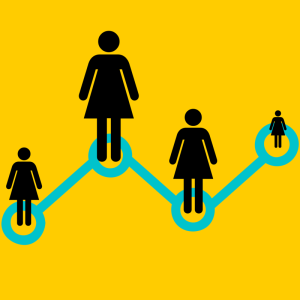>> The Status of Women in the States, a report by the Institute of Women’s Policy Research, provides data on women’s progress in 50 states, the District of Columbia, and the United States overall. The data can be used to raise awareness, improve policies, and promote equality. Here are the key findings on women’s health and happiness below.
The Status of Women in the States, a report by the Institute of Women’s Policy Research, provides data on women’s progress in 50 states, the District of Columbia, and the United States overall. The data can be used to raise awareness, improve policies, and promote equality. Here are the key findings on women’s health and happiness below.
· Since 2004, women’s health has improved on four key indicators. Women’s mortality rates from heart disease, lung cancer, and breast cancer have declined, and the incidence of AIDS among women has decreased 44 percent.
· Health outcomes are not distributed evenly by race and ethnicity. Black women are more than twice as likely to die from heart disease, and nearly three times as likely to die from breast cancer, as Asian/Pacific Islander women, the group with the lowest rates. White women have the highest lung cancer mortality rate and are three times more likely to die from lung cancer than Hispanic women, the group with the lowest rate. Incidence rates of AIDS for black women are nearly six times higher than the rate for all women, and over twenty times higher than the rate for white women.
· In every state in the country, women are more likely than men to experience poor mental health. Women are more likely to experience a greater number of poor mental health days per month than they did in 2000, with an increase from 3.8 to 4.3 days per month. Millennial women report having nearly five days per month of poor mental health. Native American women experience a far greater number of poor mental health days than women overall (6.3 days, compared with 4.3 days per month).
· Health behaviors—such as exercising, eating enough fruits and vegetables, drinking, and smoking—vary considerably by state. Fewer than half of women in the United States report exercising at least 150 minutes per week, and women in Oregon (64.6 percent) are nearly twice as likely to get this much exercise as women in Mississippi (33.1 percent). Women in Mississippi, Tennessee, and West Virginia are the least likely to eat a healthy amount (five or more servings) of fruits and vegetables daily. Women in the District of Columbia are the most likely to binge drink, and while women in West Virginia are the least likely to binge drink, they are the most likely to smoke.
Learn more about The Status of Women in the States, including reports on employment and earnings; poverty; work and family; violence and safety; and political participation >>here.
There are no comments
Add yours